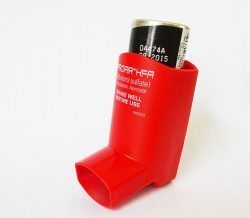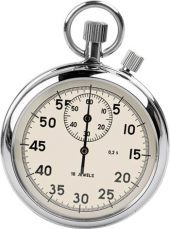Question: My friend’s little girl was just diagnosed with asthma. I had no idea it could be so severe and even life- threatening. Could you explain what asthma is, the symptoms that parents should watch for, and the most effective treatments available today?
Response by Matt C. Bell MD FACAAI Hedberg Allergy & Asthma Center
Asthma can certainly be a scary thing, especially when a child is in the midst of a severe exacerbation. Fortunately, with proper preventative treatment these are rare and most kids with asthma can live normal lives and participate in any activities they want.
Asthma is a disease of the airways. Think of the airways as an inverted tree with the trunk as the trachea or windpipe and branches that get smaller the further they get from the trunk. The larger branches are called bronchi and the smaller branches are called bronchioles. The smallest bronchioles connect to small air sacs called alveoli, which is where the exchange of oxygen for carbon dioxide and other gases occurs. Asthma is principally a disease of the bronchi and bronchioles.
There are two major components of asthma and it’s helpful to know these as it will help you better understand treatments we use. Imagine if we took one of these bronchioles and cut it down the middle – the way you might cut up a hotdog. We would see a tube with an outer lining of smooth muscle and an inner lining of mucosa (tissue very similar to what you see inside your mouth).
The first component of asthma is called bronchospasm. It is an involuntary contraction of the smooth muscle that surrounds the airway. When a muscle contracts, it gets shorter. Thus, if that muscle is arranged in a circle, the circle will get smaller when the muscle contracts. This causes the hole in the middle of the airway (called a lumen) to get smaller in diameter. It’s harder to move air through this smaller lumen and this is what causes the wheezing and breathlessness of asthma.
 Each patient who we diagnose with asthma is prescribed a medicine called albuterol. This is the “rescue” or “relief” inhaler. It causes relaxation of the airway smooth muscle, which increases the diameter of the airway lumen and makes breathing easier. For some people with mild asthma or asthma that is only triggered by exercise, this may be all the treatment they need. For others, it may be an add-on treatment to a daily inhaler.
Each patient who we diagnose with asthma is prescribed a medicine called albuterol. This is the “rescue” or “relief” inhaler. It causes relaxation of the airway smooth muscle, which increases the diameter of the airway lumen and makes breathing easier. For some people with mild asthma or asthma that is only triggered by exercise, this may be all the treatment they need. For others, it may be an add-on treatment to a daily inhaler.
The other component of asthma is called mucosal swelling. We’ve all suffered a busted lip at some point and when our lips sustain trauma, they swell. This same thing happens in the inside of the airway in people with asthma. This swelling may be caused by an allergen, a virus, or by breathing in irritating substances like cigarette smoke. This swelling is not as quick in onset as the bronchospasm we discussed before and, thus, we don’t always feel it immediately. We use medicines called inhaled steroids to control this swelling. In severe cases, oral steroids like prednisone can be used, but we use these sparingly.
The advantage of using the inhaled steroid is that we get most of the benefit of an oral steroid without the side effects we worry about with using oral steroids. These inhaled steroids are typically given 1-2 times a day, regardless of symptoms. They are sometimes prescribed in a combination inhaler that also contains a long acting form of albuterol, to keep both bronchospasm and mucosal swelling at bay.
In patients with more severe disease, other treatments may be necessary. Usually this involves either targeting triggers that worsen asthma (for instance putting someone with allergic asthma on allergy shots) or targeting a specific substance that contributes to asthma. Examples of the latter include some of the new “biologic” drugs which are usually given as an injection every 2-8 weeks and target specific chemicals in the body that are known to drive the process of asthma.
 The main thing I tell parents regarding the symptoms of asthma is to avoid being scared to use the rescue or relief inhaler. Parents often wait to use this until things get way out of hand and by then it may be too late, necessitating a trip to urgent care or the ER. Increased coughing, wheezing (a high-pitched sound heard at the end of expiration, or breathing out), and shortness of breath are all things to watch for that may require the use of albuterol. Obviously, if a child is really struggling to breathe or if there is any color change of the face or lips, those are reasons to immediately seek emergency medical help.
The main thing I tell parents regarding the symptoms of asthma is to avoid being scared to use the rescue or relief inhaler. Parents often wait to use this until things get way out of hand and by then it may be too late, necessitating a trip to urgent care or the ER. Increased coughing, wheezing (a high-pitched sound heard at the end of expiration, or breathing out), and shortness of breath are all things to watch for that may require the use of albuterol. Obviously, if a child is really struggling to breathe or if there is any color change of the face or lips, those are reasons to immediately seek emergency medical help.
In conclusion, asthma can be a scary disease, but learning about what it is, why it causes problems, and what we do to prevent or treat those problems makes it easier to manage. Work with your doctor or your child’s doctor to develop an asthma treatment plan and remember, if you need more help, there are asthma experts ready to help right here in Northwest Arkansas.
Matt C. Bell MD FACAAI is one of the Board Certified Allergists practicing at Hedberg Allergy & Asthma Center, with locations in Rogers and Fayetteville. The clinic diagnoses and treats asthma, allergic rhinitis and other diseases of the upper and lower respiratory tract, drug and insect hypersensitivity, latex allergy, hives, allergic skin disease, recurrent infections and congenital immunologic deficiencies. Hedberg Allergy & Asthma Center was ranked No. 1 in the category of “Best Allergy Clinic” in the most recent Mom-Approved Awards, as voted by mothers in Northwest Arkansas. Click here to visit the clinic’s website or call 479-464-8887 (Rogers) or 479-301-8887 (Fayetteville) for more info.







